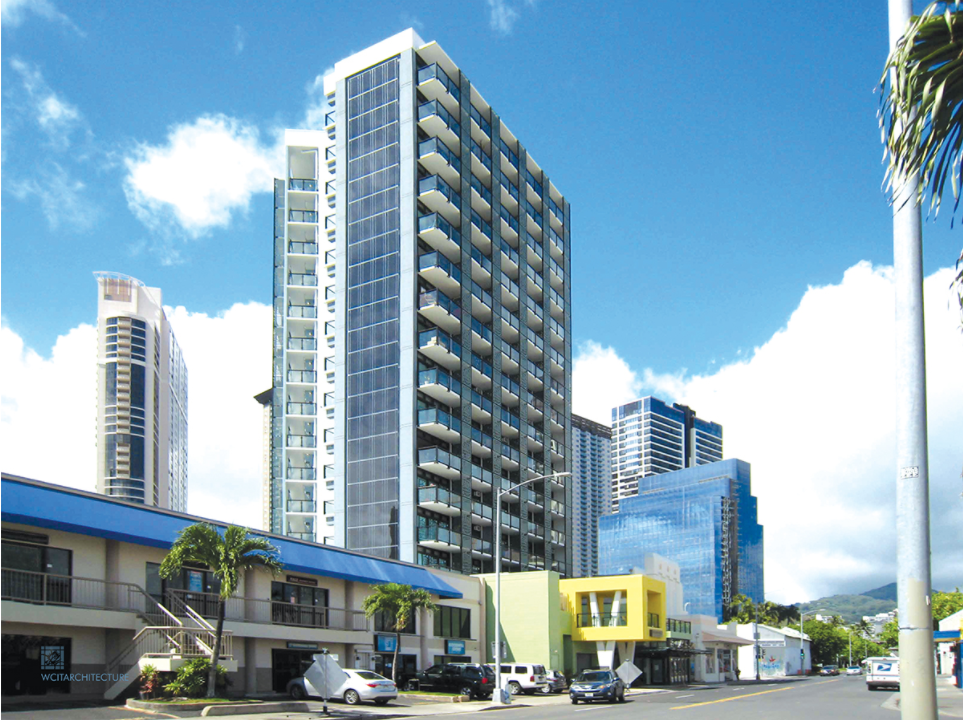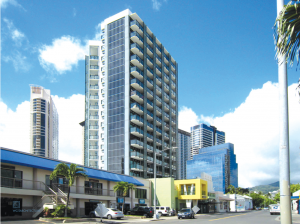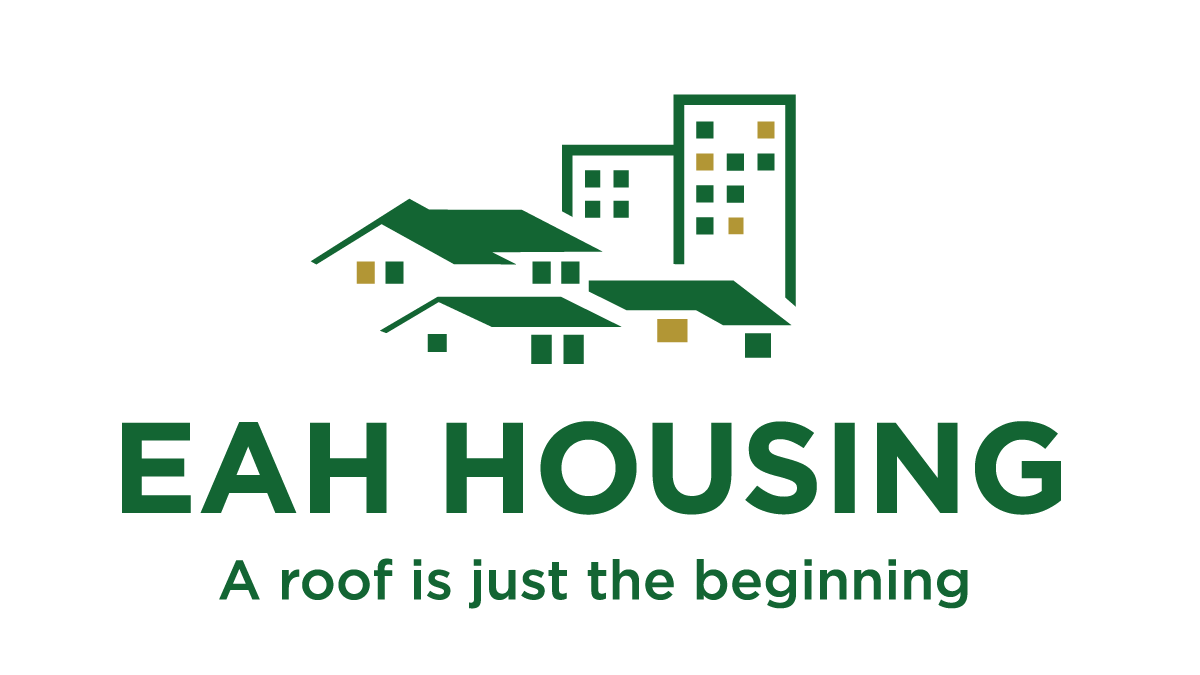
New Dorm-Size Dwellings Provide Rental Housing Close to Jobs, Bus Lines and Much of Urban Honolulu
Honolulu Magazine
By Robbie Dingeman | December 28, 2020

In a renovation of micro-unit proportions, developers transformed a small parking lot into Kaka‘ako’s newest stylish apartments. Early this year, individuals, couples and families moved into the 111 affordable rental units.
“Nohona Hale began as a very tall order for a very tiny site,” says Marian Gushiken, director of real estate development in Hawai‘i for nonprofit EAH Housing. The $52.7 million project rises up from Cooke Street, near historic Kewalo Theater and popular plate lunch restaurant Karen’s Kitchen. Each unit measures 285 square feet plus a 70-foot lānai. The units are just 14 feet across but feel larger because of 9-foot-high ceilings and floor-to-ceiling windows that lead to the lānai, featuring partial views of the ocean.
From the street, the first thing you notice about the new tower is the bright yellow second-floor balcony that resembles a chic café and shows off some of the shared space where residents can gather, meet and cook. There’s storage for bicycles, mopeds and surfboards but no residential parking.
Gushiken notes that each unit can have no more than two residents. Rents are calculated based on federal income limits that set monthly rates at $559 to $999 for people earning between $25,000 and $60,000 a year. She says 750 applied and the 16-story building was full by the end of March.
“We hope this serves as a case study to pursue a variety of affordable housing options in Hawai‘i.” — Jonathan Lee Project architect, WCIT Architecture
The tower is built on 4,400 square feet of the 9,600-square-foot lot. How big is that? Two basketball courts at nearby Mother Waldron Park measure 9,400 square feet and the typical lot size for a single-family home in the new Ho‘opili subdivision in ‘Ewa Beach measures 4,000 square feet.
The project came together with the state Hawai‘i Community Development Authority looking to foster an affordable rental project that provides smart growth and sustainability by using micro units, which had been talked about but not tried, Gushiken says. Other partners included the Hawai‘i Housing Finance and Development Corp. and Bronx Pro Group. She credits the success of Nohona Hale to the willingness of public and private groups to work together “to redefine and reimagine what affordable housing is.”

